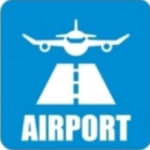I know that cargo is carried in all planes. The ones I refer to are the ones that are owned and operated by those cargo carriers.
You missed my point. Cargo is routinely transferred between cargo airlines and passenger airlines at Pearson. Something might come in to Pearson on a Fedex flight and then fly out on an Air Canada flight. Hence, why cargo carriers like to be co-located with passenger airlines they partner with.
Who pays for the cost of the rail line? The same that are paying for the new airport - the governments.
Airports are paid for through user fees these days. See the airport improvement fee on your ticket next time you fly. And if those have to pay for the rail connection, Pickering is sunk.
GO plans to use the Mid Town Corridor in the future.
Then shouldn't airport expansion in Pickering wait till the Mid-town is built? Building the airport earlier effectively means relying exclusively on roads for connectivity.
If Porter moved, they could fly larger planes and potentially could expand like WestJet did a few years ago.
If they lose their monopoly at the Island, Air Canada and Westjet would crush them. As it stands, Porter's best sales pitch is that they fly you directly to downtown Toronto. Move them to Pickering and there's no real competitive edge at all. And worse, it'll be faster and easier to get downtown from Pearson with the UPE.
I don't know if there is a case for this airport right now, but as air travel becomes more popular, and as Canada's and the GTA's population increases, so too will the demand.
Why can't the demand be accommodated with larger airplanes at Pearson and an expansion of service in Hamilton? That's what I want answered.
Consider, for example, Air Canada's service to London Heathrow. The schedule for today has two 789 flights, one on a 77W and one on a 77L. Using Air Canada's seat counts from Wikipedia, that amounts to 1346 seats today to Heathrow. Let's assume that all four flights were switched to 450-seat 77Ws. That would increase the seat counts to 1800, an increase of 33.7%. Air Transat and Westjet fly to London Gatwick with smaller B763s, A310s and A332s. Upgauge those too and you can add a good bit more seats to the London area.
And what if AC needs another flight to London? Ask yourself if they really need three 37-seat and one 50-seat flights per day to Sault Ste. Marie. Would they not be better off with three 78 seat Q400 flights per day (adding 73 additional seats to Soo) and one additional slot (adding upto 450 seats) to London?
This is what I keep talking about. Pearson has plenty of room to increase capacity by the airlines there simply upgauging to existing destinations and rationalizing slots.






